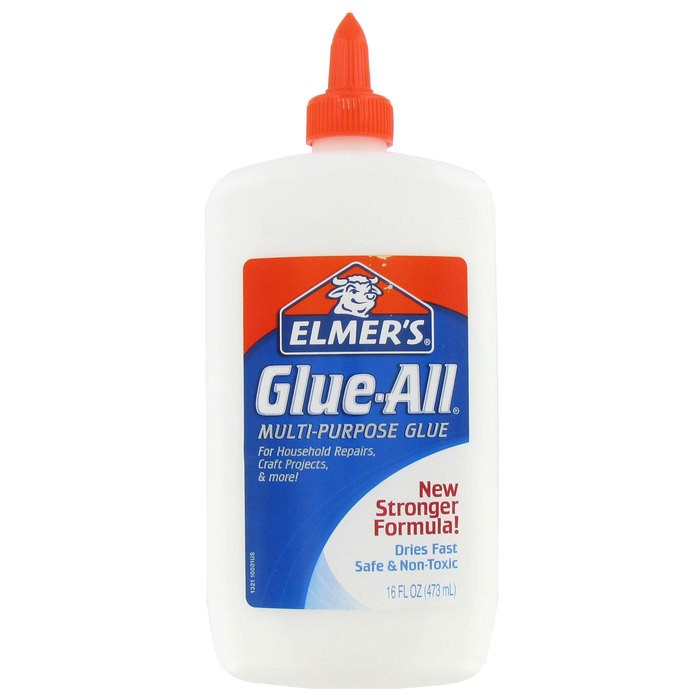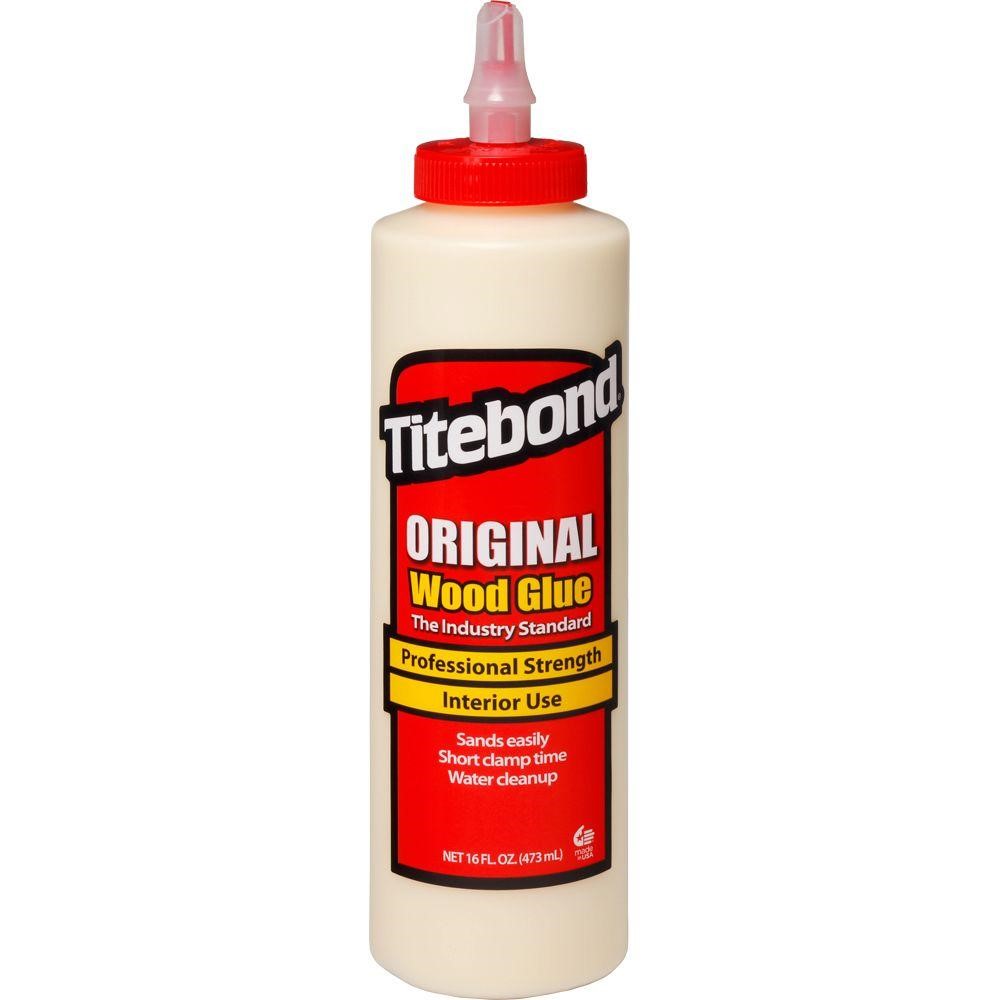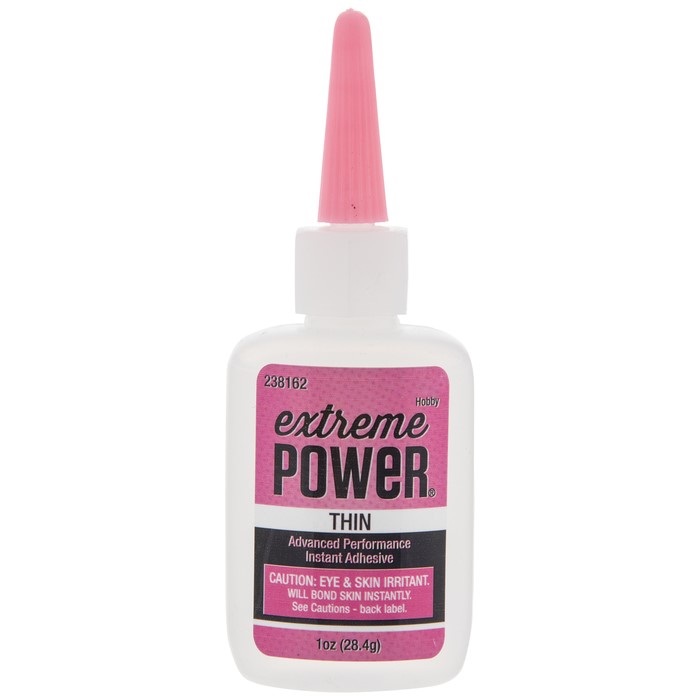Adhesives & Glues

There have been gigantic strides in adhesives in the last 50 years. Modern wood glues in particular are far superior to the animal-based glues of old times. When I see 'luthiers' insisting that you must use Hide Glue, I have to laugh. Tone Glue? Seriously? Here are the most useful adhesives if you are building a guitar:
The first glue that comes to mind is good old Elmer's. If you were ever a kid, you know this stuff. It is water-based and dries clear. It is not sandable. Suitable only for porous materials like wood and paper, although it can get a pretty good grip on non-porous surfaces if you rough them up good. Perhaps its greatest advantage is that it cleans up with water, even long after it has dried. That is also its greatest disadvantage - it is not waterproof at all. For loothery, I use this glue for installing frets. It is strong enough to add some grip for the fret ( especially re-frets ) and cleans off the fretboard perfectly. You can also use it to install a nut, but I wouldn't use it for anything else.

For most glue-ups in wood and similar materials, I use Titebond I, or Original. This is actually not that different a formulation from Elmers, it just contains yellow dye to make you think so, and will stain your fingers. Titebond is not waterproof, although it is more water-resistant than Elmer's. Cleans up with water while wet. It dries an ugly yellow but is sandable. There are other formulations of Titebond that offer more water and weather resistance, but for loothery, Titebond I is the strongest and cheapest, although the others will work.
The glues described so far are theoretically prone to "creep" - that is, the joint may slowly shift under stress. I have never seen that actually happen, and I would say that creep is more a matter of a badly designed joint than the choice of adhesive. These glues are all based on polyvinyl acetate or PVA. Elmer's and Gorilla have similar yellow wood glues.

Cyanoacrylate - CA, Super Glue, or "Crazy Glue" is well-known to anyone who has glued their fingers together with one of those cursed little squeeze tubes. Never buy those, buy it in a plastic bottle as shown above ( from Hobby Lobby. ) CA will glue almost anything, porous or non-porous. Nowadays it comes in various consistencies - from thin like water to thick and gummy. The thin versions readily wick into cracks and crevices, while the thicker formulas are good for filling small gaps and even repairing finishes. All dry clear, although without air circulation they may leave a white haze on the surface. Fumes are pretty bad. Clean up with acetone, even after drying. There is also an accelerant available, although it is of questionable usefulness.
CA can also be used to make spot repairs in clear finishes, and for small parts it can actually be used as the finish. It bonds wood almost instantly ( just like skin! ) You can fill small divots in wood with sawdust and add a drop of CA for a seamless repair. I fixed a small router tear-out on the teak Eagle this way, and you would never find it. You can fill a hole with baking soda and dribble CA on it to make a repair filler that is very hard and strong. I have filled knobs this way and then re-drilled the holes, it is also useful for raising up over-cut nut slots. Dried CA can be filed and sanded.
E6000 is a silicone-based adhesive that is useful in special cases, especially non-porous materials. It is not very good for most things. I sometimes use it to glue nuts, because it holds them pretty well, but can be knocked apart if necessary. E6000 fails steadily under tension. Clean-up is impossible. Instead, let it dry and rub off the excess with your thumb. Trying to wipe it off before it cures just makes the mess bigger. Dries clear and rubbery, waterproof.
Antique hide glue is often praised by luthiers. I see no advantages over modern adhesives. It is weak and takes forever to dry. While in theory it does not creep, instead it simply falls apart from heat and humidity. I have heard stories of old guitars going completely to pieces when left in a hot car. I can think of no good reason to use Hide Glue for anything.
Regular original Gorilla Glue is a thin foaming polyurethane that was invented solely to make a mess. It is really an insulation masquerading as an adhesive. Stay away from it, I can't think of a single good property it has.
You can extend the life of non-water-based adhesives after opening them by storing them in the freezer. I suppose you could store water-based glue in the refrigerator as well.
Luthiery needs some form of 'tap test' for glue. A true luthier knows that the 'tap tone' is the most important measure of any material. I would be willing to sacrifice several dozen top luthiers in the pursuit of adhesive tap tone. I would volunteer myself for this duty, but I am not qualified, I'm just a hack carpenter and engineer.
BTW, the teak cutting board I converted to a guitar is glued up with Titebond II, and just think about the kind of wetness and abuse one of those is expected to endure.

Questions or Inquiries?
Just want to say Hello? Sign the .